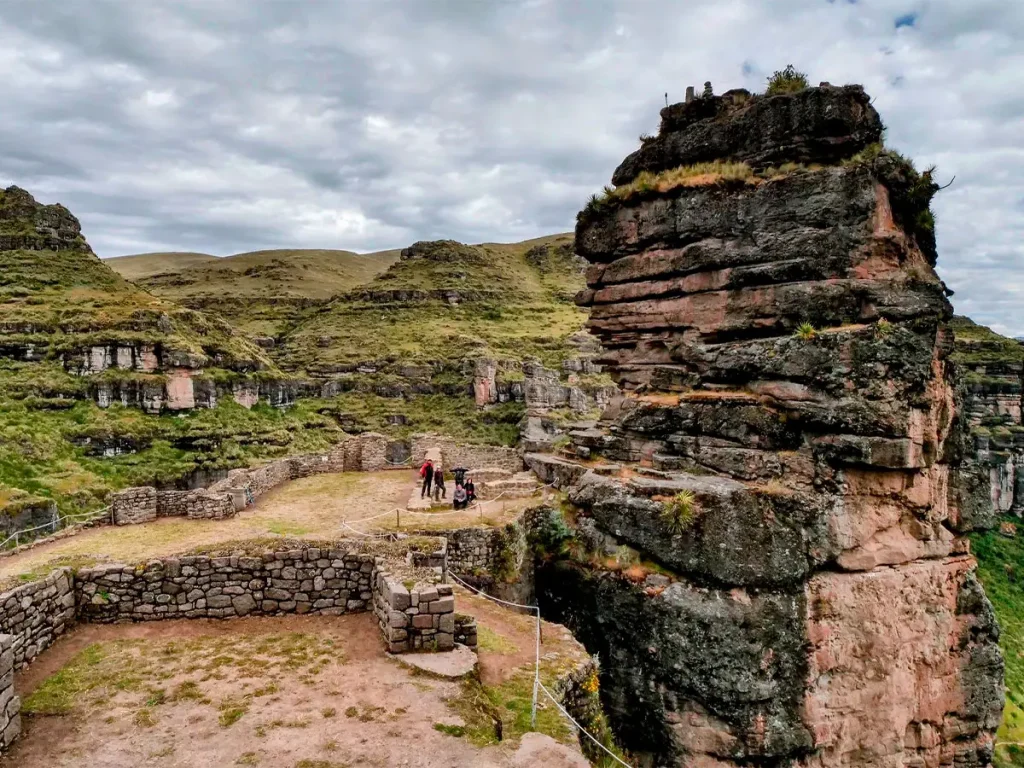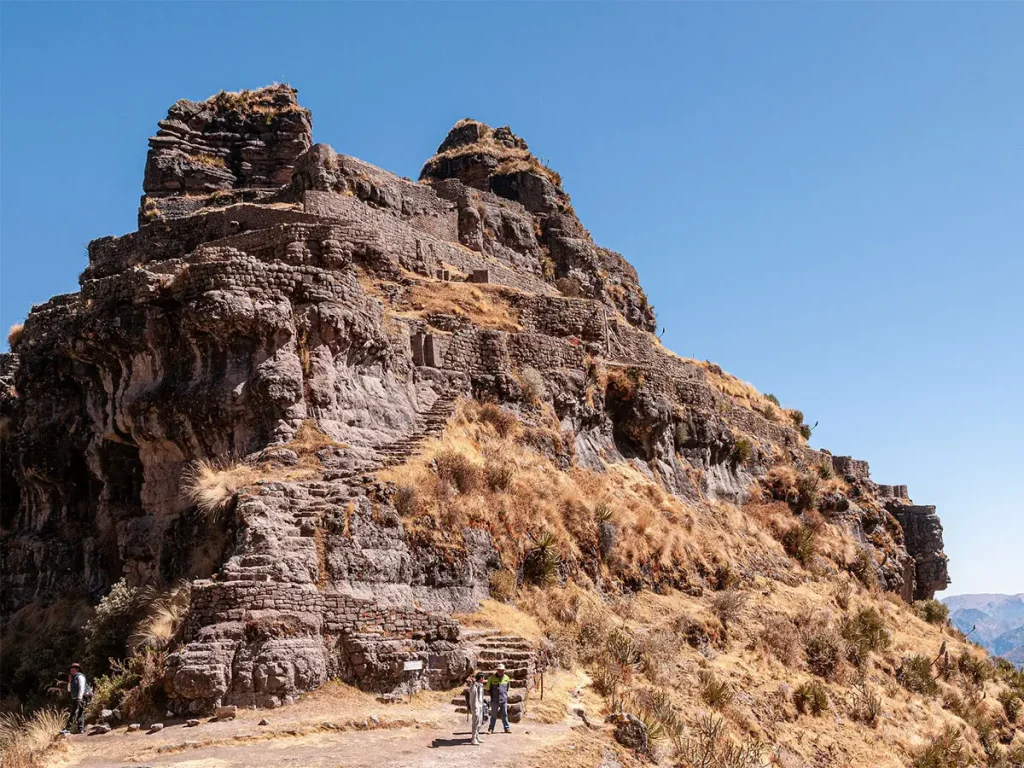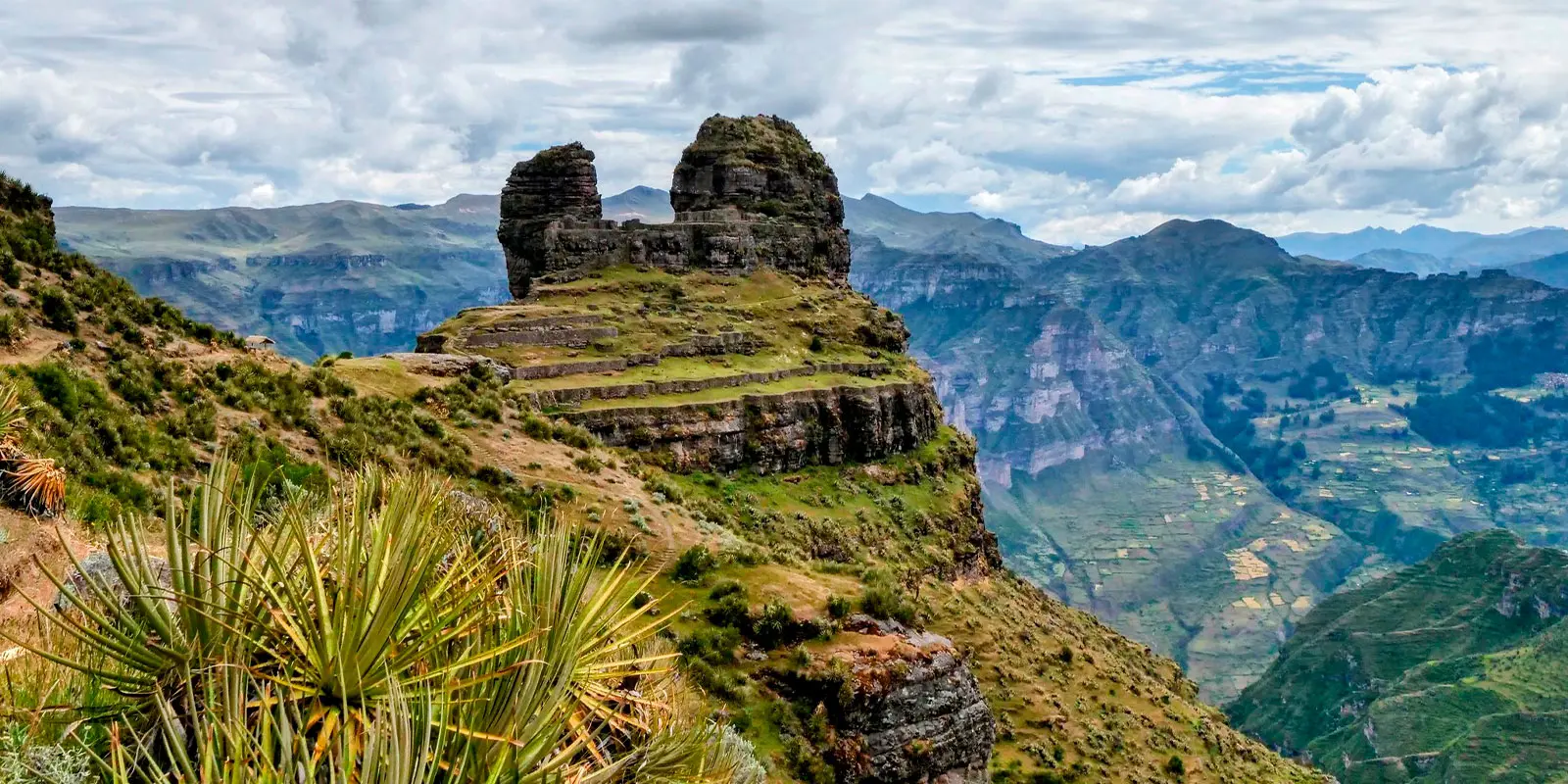Have you a thirst for something new and exciting? There is a newly discovered site that is ready for tourists and is incredibly beautiful located in the heart of the Andes. Waqrapukara opens as a tourist destination featuring pristine landscapes with impressive mountains that are amazing to see. The charms of Waqrapukara are not only the incredible mountains, but also the interesting ruins, the incredible high Andean wild flora of the surrounds.
History
Waqrapukara has pre-Inca and Inca constructions, the site has been built over many different periods. The Qanchis, who are said to have built the foundations, were the first settlers and came from the Apurimac valley, they built rustic houses that were occupied as dwellings. Later, when the Inca, Wayna Qhapaq arrived he used the base of the constructions as foundations. It is also said that Ttiti Qosnipa used the site for resistance when he was at war with the Inca.
Function of Waqrapukara
After the modifications Waqrapukara became an Inca fortress. The fortress of Waqrapukara was embellished with platforms and in each entrance of the platforms there were double and triple jamb doors. These constructions were sophisticated and advanced for their time. Waqrapukara was a sacred place and administrative center.
Location
Waqrapukara is located 116 km south east of Cusco. The site is between the districts of Pomacanchi, Acos and Sangarara. Its private location allowed it to remain mostly intact for hundreds of years, the location has some of the most scenic beauty.
Altitude: Waqrapukara is at an altitude of 4140 meters above sea level.
Climate and temperature
The climate of Waqrapukara corresponds to that of the high Andean zones, which are characterized by two distinct seasons (rainy season and dry season). The rainy season usually begins in the months of October and November and lasts until April. January and February are the rainiest months and it is not advisable to travel during this time of the year.
The dry season starts in April and lasts until September or October. this time of the year there are sunny and clear days and temperatures that exceed 22 degrees Celsius. The dry season is considered the best time to visit the archaeological complex of Waqrapukara.
What does Waqrapukara mean?
Waqrapukara comes from the Quechua word Waqra, which means horn and Pukara which means fortress. According to legend the site was originally called Llamapukara, because of its structure resembling a llama head.
Architecture of Waqrapukara
The Inca had several types of styles for their constructions, this all depended on the importance and function of the site. Another important fact was the landscape and environment. The construction was always adapted to the environment of the area. Waqrapukara shows the three types of Inca construction which are the following. The rustic or common “pircado” style and the cellular style. There are also double and triple jamb entrances where it is shown that the Incas developed to perfection the carving of the rocks. Also, you can see the imperial Inca style, it was a type of construction where the Incas developed engineering and architecture to perfection. The constructions had many aspects to take into account such as symmetry, width, length and finally the perfection of the pairing of each rock. The most outstanding feature of Waqrapukara was how the Inca the perfected the site on the edge of the mountain.


The Shape
Waqrapukara possesses an additional mystery, as there is currently a debate about whether this historic site has the shape of a horn or a llama’s ear. The local inhabitants, rich in ancestral knowledge, indicate that the fortress’s shape is inspired by the upright ears of the llama when it is surprised. It is not uncommon to hear some refer to this place as “Llamapukara,” highlighting the connection with these essential animals in Inka life.
Layout of the site
Waqrapukara ruin consists of two main groups, each telling a unique story of Inca greatness.
The upper part has two subspaces, separated by a spacious central area with elaborate doorways, niches, and passageways. The second group comprises eight strategically laid out terraces, adapting to the terrain’s topography. These stepped terraces, with an average height of 1.80 meters and an impressive length of 153 meters, showcase the technical skill of the builders. Both spaces suggest that, in addition to its military function, Waqrapukara could have also been a key setting for religious and spiritual ceremonies.
How hard is the hike?
This will depend a lot on the route you are going to take to visit the archaeological complex of Waqrapukara. There are routes that are easy and others that are difficult. The easy routes are short and flat, while the hard are uphill with winding roads. You should also consider the altitude, since the archeological complex is located above 4000 meters above sea level.
Different Routes to Waqrapukara
- Wayqui – Waqrapukara
This route is recommended for those who have only a short time to spare. The hike will take around 1 hour and 30 minutes from town to the site.
- Campi – Waqrapukara
From the village of Campi the hike will take around 2 hours and 30 minutes to Waqrapukara.
- Acomayo – Waqrapukara
Hike from Acomayo for 4 hours and 30 minutes to Waqrapukara.
- Sangrará – Waqrapukara
Walk 5 hours from Sangrara to Waqrapukara.
- Pitumarka – Waqrapukara
From Pitumarka walk to Pitumarka Lake and then onto Waqrapukara. The trek is around 5 hours long.
- Chosecani – Waqrapukara
Start in Chosencani walk to Sangarara and finish in Waqrapukara. The trek is around 5 hours.
- Ruta Santa Lucia – Waqrapukara
Staring in Santa Lucia walk for 2 hours until Waqrapukara.
The Waqrapukara Festival
The Waqrapukara festival is a cultural activity promoted every year by the local government of the district of Acos. The purpose is to showcase the folklore and culture and put the Waqrapukara archeological park on the tourist map. The activities of the festival consist of staging the legendary Qanchis resistance against the Inca Wayna Qapaq. The act is divided into several scenes and is accompanied with the best of the typical dances of the area. The festival is in August of every year and is the best time to visit.
Travel Tips
Before the Trek, Adjust to the Altitude
We recommend spending a few days in Cusco before your trek begins to give your body plenty of time to adjust to the high-altitude region. Cusco is a city that resides at 11,120 ft (3,400 m) above sea level.
Recommendations for a great experience
- Bring your hiking boots that are comfortable and well worn.
- A few months before you leave home start to exercise to enjoy your experience more.
- Arrive into Cusco at least 2 days before you start any hike to acclimatize.
- Always take snacks with you like, chocolate, dried fruits or cereal bars for energy and always take plenty of water
- Take a change of clothes in case you get wet or dirty. Dress in layers as the mornings can be cold, midday can be hot and nights cold.
- Many people like to trek with walking poles, these are a great idea to help with balance.
- Always take a hat and sunscreen as the sun can get very strong. Insect replant is also a great idea.
- It is never a good idea to drink a lot of alcohol before leaving for a trek.
It is always great to see new and exciting sites. Take a tour to Waqrapukara, not far from Cusco the ruin is a memorable day out, test your hiking skills, see beautiful valleys, hear stories and legends that will leave you in awe of this ancient civilization.
Tour Waqrapukara today






